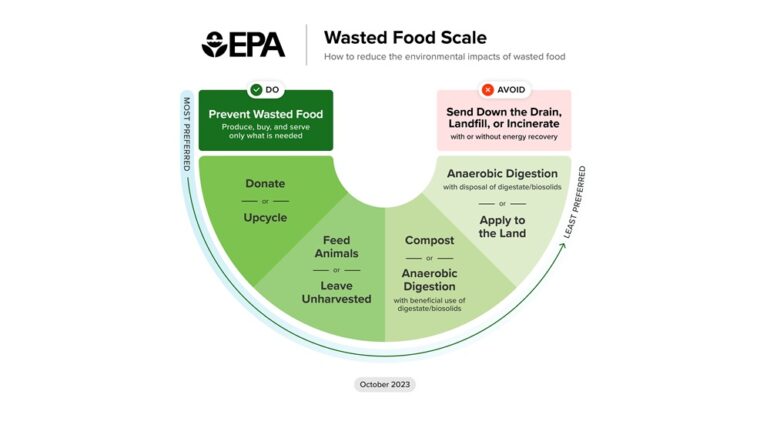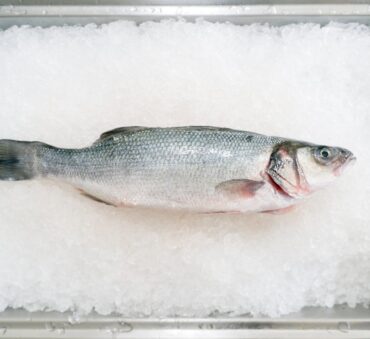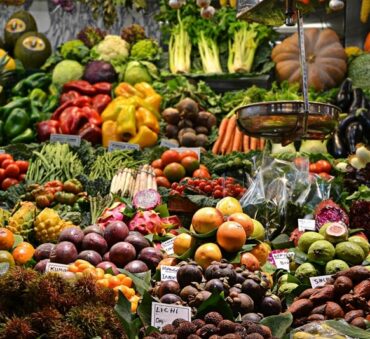From production to consumers, food waste is a huge problem that occurs all over the supply chain. To reduce food waste and address the environmental, economic, and social implications of it, sustainable food waste management must be applied throughout production, processing, distribution, retail, and consumer levels.
While there are various strategies to prevent and manage waste, the food waste management hierarchy prioritizes actions that individuals and organizations can take by identifying the best environmental options. If you’re interested in reducing waste, whether at home or through large-scale initiatives, the food waste hierarchy will help you explore different pathways to prevent and divert waste from landfills.
Key Takeaways
- The food waste recovery hierarchy was first developed in the 1990s and has since been updated to be called the Wasted Food Scale. This new scale reflects the latest science and technological advances, changes in environmental policy, and changes in operational practices.
- The Wasted Food Scale ranks each tier from the most preferred option to the least, which consists of: prevent wasted food, donate or upcycle, feed animals or leave unharvested, compost or anerobic digestion, apply to the land, and send down the drain, landfill, or incinerate.
- Preventing food waste at the source is the most preferred method on the Wasted Food Scale because of its significant benefits to the environment. Strategies to reduce waste include improved inventory forecasting, enhanced food storage practices, more efficient agricultural practices, and increased education and awareness.
- This scale provides a framework for policymakers, promotes best practices, and encourages collaboration across sectors to achieve common goals, making it an important component of fighting the food waste crisis.
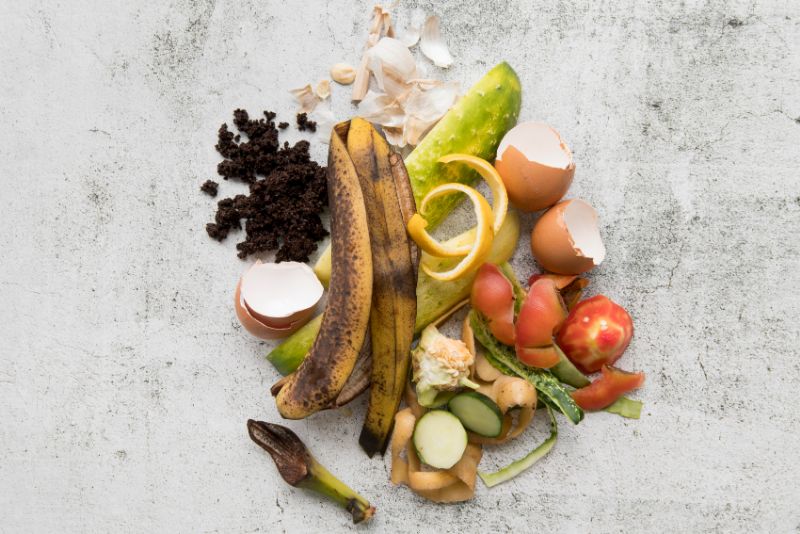
What is Food Recovery Hierarchy or Wasted Food Scale?
As mentioned, the Food Recovery Hierarchy prioritizes actions organizations can take to prevent and divert wasted food. This concept was introduced by the United States Environmental Protection Agency (EPA) to help reduce food waste in the U.S. and around the world.
The food waste recovery hierarchy was first developed in the 1990s and consisted of an inverted pyramid with 6 levels, with the top level being the most favorable. In order of most preferred to least preferred methods, the approach consisted of the following:
- Source reduction
- Feed hungry people
- Feed animals
- Industrial uses
- Composting
- Landfill/incineration
This hierarchy has become an important aspect of reaching the United States’ food loss and waste reduction goal, which seeks to cut food loss and waste in half by the year 2030. It’s also been implemented into the EPA’s Food Recovery Challenge, a voluntary incentive program in which organizations and businesses improve their sustainable food management practices and report results to compete for annual recognition.
As we’ll see below, the food waste hierarchy has since undergone revisions and is currently known as the Wasted Food Scale.
The Transition from Food Recovery Hierarchy to Wasted Food Scale
In 2023, the EPA prepared a report that led to the transition from the Food Recovery Hierarchy to the Wasted Food Scale. This report, called From Field to Bin: The Environmental Impacts of U.S. Food Waste Pathways, evaluated eleven common methods for managing waste, considering their environmental repercussions and contributions to a circular economy.
Based on this study, a new ranking emerged, which is now called the Wasted Food Scale. This new hierarchy reflects the latest science and technological advances, changes in environmental policy, and changes in operational practices in the wasted food pathways since the Food Recovery Hierarchy was developed.
These revisions better address the complexities of modern food waste challenges, promoting both sustainability and circular economy principles. As shown in the image below, the Wasted Food Scale identifies prevention, donation, and upcycling as strategies that offer the most benefits to the environment.
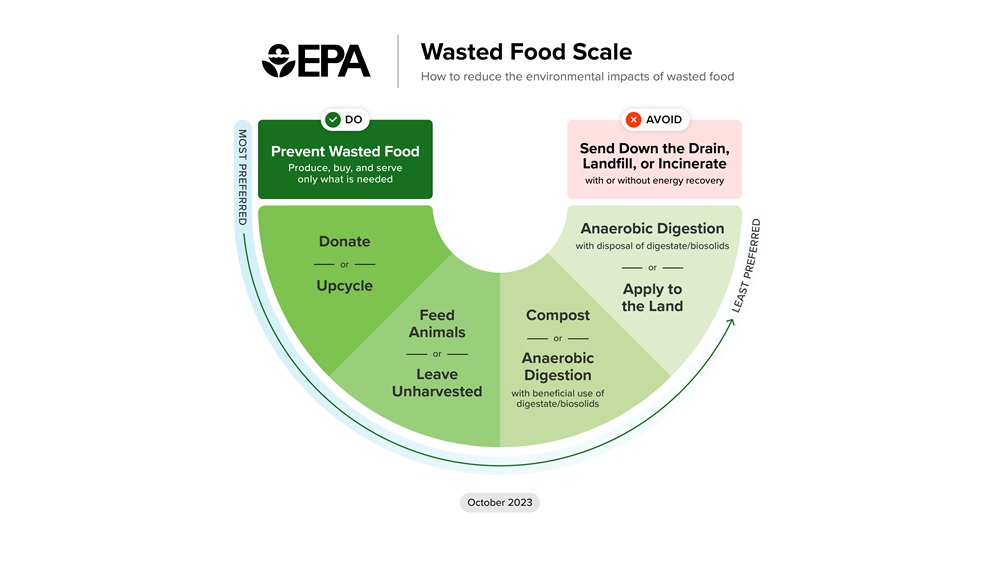
Wasted Food Scale: What Does It Include?
Keep reading to explore the food waste scale in more depth, where we’ll discuss each tier of the hierarchy from the most preferred option to the least.
Prevent Wasted Food
Preventing food waste at the source is the most preferred method on the Wasted Food Scale because of its significant benefits to the environment. Strategies to reduce surplus food production and waste include:
- Improved inventory forecasting: Accurate demand forecasting helps businesses balance production and demand, therefore reducing overproduction and minimizing waste. The implementation of predictive analytics helps businesses predict user demands and trends, therefore improving inventory management.
- Enhanced food storage practices: Improper storage causes food to deteriorate at a faster rate, leading to food waste along the supply chain. Businesses can prevent waste by enhancing packaging methods, keeping food at the right temperature, and monitoring humidity levels.
- Improved transportation and distribution: Improved transportation solutions are required to prevent spoilage during distribution. This includes efficient transportation routes, proper handling, and better communication between producers and retailers.
- More efficient agricultural practices: To prevent waste at the manufacturing stage, farmers can implement efficient farming practices, such as harvesting produce at the right time, implementing precision agriculture technologies and techniques, selling imperfect produce at a discounted price, and investing in proper infrastructure.
- Redesign products to minimize waste: This includes offering products in smaller sizes to prevent over-purchasing, redesigning packaging to extend the product’s shelf life, and providing clear expiration dates and storage instructions.
- Increased education and awareness: Increased awareness helps individuals understand the severity of the food waste crisis, encouraging consumers and organizations to adopt behaviors that reduce food waste at the source. Awareness campaigns can provide tips for upcycling, bring attention to local initiatives, and improve the understanding of expiration dates to reduce food waste.
Donate
Donating surplus food to food banks, shelters, and other charitable organizations helps address food insecurity, divert food from waste streams, and provide companies with potential cost savings.
In addition to decreased disposal costs, companies can also receive potential food waste tax deductions for donating surplus food. Food waste regulations have helped support this movement by providing national and state-wide tax incentives as well as liability protection. The Bill Emerson Good Samaritan Food Donation Act, which is an act that protects donors from liability, is a great example of how innovative laws can encourage food donations and reduce waste.
The emergence of food waste apps has also facilitated donation processes by connecting donors with recipients and assisting in inventory management, making it easier to plan donations and reduce waste.
Upcycle
Upcycling uses ingredients that would otherwise be discarded and transforms them into high-value products. Businesses and households that implement food waste recycling help support a circular economy and extend the lifecycle of products, making it a valuable waste reduction strategy.
There are multiple ways to implement food by-product recycling, such as using spent grains from beer production to create snack bars or turning fruit peels into animal feed or dietary supplements.
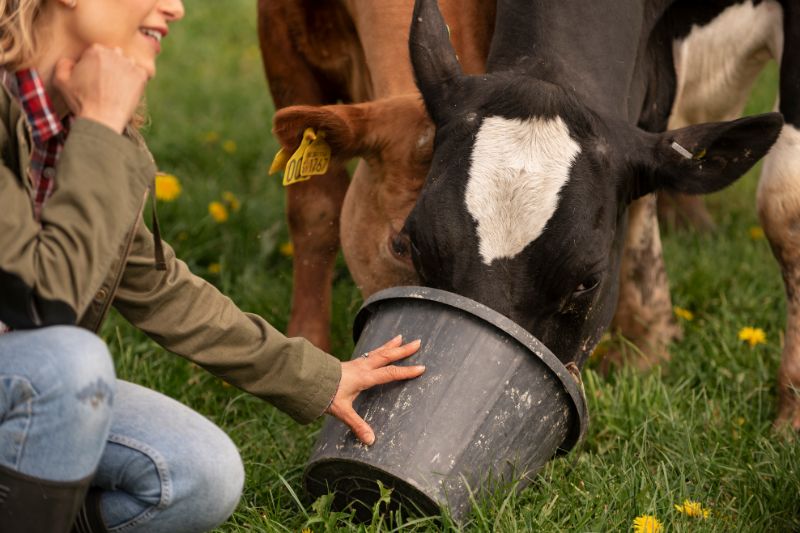
Feed Animals
Reducing wasted food by feeding animals is the third tier of the EPA’s food waste scale. By reducing the need for conventional feed, this method minimizes the environmental impacts associated with that feed production. It also provides potential cost savings, as it can be cheaper than transporting waste to landfills.
Turning food waste to animal feed also opens the opportunity for businesses to create a new revenue stream. To ensure animal health and regulatory compliance, businesses that want to create animal feed for sale must follow the necessary precautions to prevent disease outbreaks.
Leave Unharvested
There are various factors that lead to excess production, such as the cycle of overconsumption and overproduction and the rejection of ugly fruits and vegetables waste. While prevention is the preferred method, there are various circumstances where it might be environmentally beneficial or economically necessary to leave crops unharvested, such as natural disasters or market disruptions.
This approach helps conserve resources by reducing the need to harvest, process, and transport produce that may never be consumed. Unharvested produce can also be grazed by animals or plowed into the soil, contributing to soil health and supporting the growth of future crops.
Composting
Converting food scraps into compost is the process of recycling organic matter into a nutrient-rich soil amendment. This approach has a variety of benefits, including reduced landfill use and a decreased carbon footprint. Compost also enhances soil quality and promotes healthy plant growth.
Another advantage of composting is that it can be implemented on a small or large scale, with strategies that range from backyard bins to large industrial facilities. Households can create at-home compost piles or get involved in local initiatives, while organic waste management companies can streamline composting for businesses by helping them reach their sustainability goals.
Anaerobic Digestion
Anaerobic digestion of food waste is a process in which microorganisms break down biodegradable matter in the absence of oxygen. This process can be categorized into two main groups based on what is done with the resulting digestate or biosolids:
- With beneficial use of digestate/biosolids: Anaerobic digestion processes organic waste to produce biogas (primarily methane) and digestate, a nutrient-rich byproduct used as fertilizer. This approach leads to the production of renewable energy and valuable soil amendment, which enriches the soil, promotes resource efficiency, and creates value-added products from organic waste streams.
- With disposal of digestate/biosolids: In other circumstances, digestate or biosolids are treated as waste and disposed of in landfills or incineration. Disposing of digestate or biosolids without beneficial use can cause environmental consequences, including the loss of valuable nutrients and organic matter and potential risks to water and soil quality if not managed carefully.
Apply to Land
Raw wasted food from the food manufacturing and processing sector can be applied to land to improve soil quality and reduce the need for commercial fertilizers. This may involve spreading, spraying, or injecting the wasted food on or below the surface of the soil.
This method diverts large amounts of organic waste from landfills and can be a beneficial solution in the agricultural sector. That said, proper agricultural waste management services and monitoring are essential to maximize the benefits while minimizing potential risks to the environment and public health
Send Down the Drain, Landfill, or Incinerate
Landfill, incineration, and sending food down the drain are the least preferred methods on the Wasted Food Scale, each having harmful effects on the environment, including pollution and resource depletion. In addition, both food waste in landfills and food disposal through drains generate methane, a powerful greenhouse gas that contributes to global warming, while incineration leads to the loss of valuable nutrients.
That said, businesses and individuals who want to improve sustainability efforts should strive to implement higher-tier practices, such as prevention, donation, and landfill diversion.
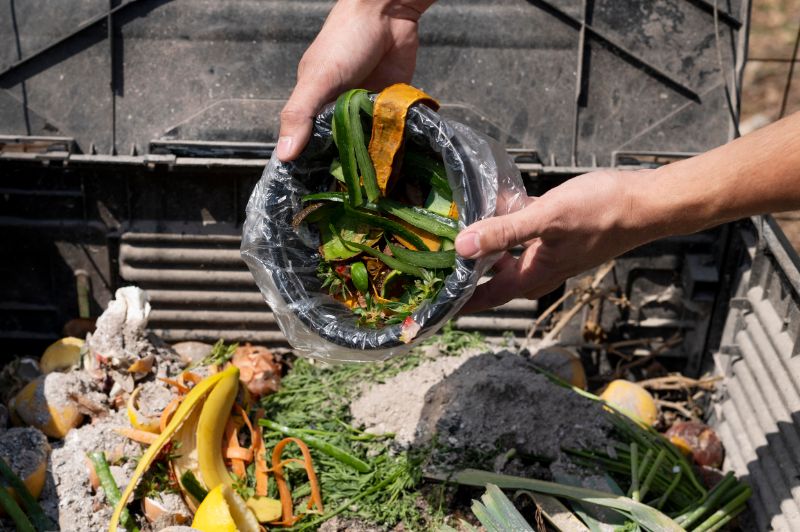
The Significance of Wasted Food Scale
The food waste hierarchy emphasizes the importance of environmentally friendly waste management strategies, prioritizing prevention, donation, and upcycling above other methods. By ranking different methods in order from most to least preferred, individuals and businesses alike can make informed decisions on personal and large-scale waste reduction efforts.
Businesses that implement higher-tier methods can significantly reduce their environmental footprint and use their resources more efficiently. In addition, this scale provides a framework for policymakers, promotes best practices, and encourages collaboration across sectors to achieve common goals.
Challenges and Opportunities
There are various challenges related to the different tiers of this hierarchy, including technical limitations, regulatory hurdles, and cultural barriers. Since every business has different resources, requirements, and long-term objectives, they must consider which solution is best for their unique situation, using the food waste scale to prioritize actions.
To enhance sustainability efforts, food waste management technology has created new opportunities for implementing more efficient and effective strategies. For example, the use of AI in food waste management is emerging as an innovative solution to improve food waste management and divert food from landfills.
In addition, governments play a critical role in incentivizing food waste reduction. Developments in policies can help support this movement, which may include tax incentives for food donations, landfill bans on organic waste, or mandatory food waste reporting requirements for businesses.
The Bottom Line
The food waste management hierarchy is an important tool in helping businesses, individuals, and governments decide how to prevent and manage waste. To choose the best solution for your business’ specific needs, we recommend working with a food waste management company to reduce your environmental footprint.
At Shapiro, we’ll work closely with you to create a tailored waste management solution that helps you meet your sustainability goals. To learn more about our commercial food waste disposal solutions, contact us today.
Baily Ramsey, an accomplished marketing specialist, brings a unique blend of anthropological insight and marketing finesse to the digital landscape. Specializing in educational content creation, she creates content for various industries, with a particular interest in environmental initiatives.
